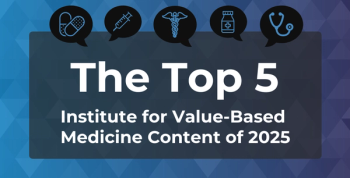
Knowledge Lacking on Link Between AID Needs, Menstrual Cycle in Women
This subanalysis of participant data from the OPEN project investigated relationships between glycemic levels and insulin requirements among women with type 1 diabetes and phases of their menstrual cycle.
The health needs of women with type 1 diabetes (T1D) are not being optimized by health care professionals, researchers, medical device manufacturers, nor regulatory bodies, leading investigators of a recent study to conclude that education and advocacy for female health and diabetes management need to be improved.
Their subanalysis of data from 12 women living with T1D who self-managed the autoimmune disease using personalized open-source
The study was part of
“Hormone dynamics throughout the menstrual cycle on insulin sensitivity represents a currently underresearched area,” the authors explained in
Following the interviews, 6 themes emerged:
- Improvements through open-source AID
- Variations in glycemic and insulin requirements
- Additional effort to achieve therapy outcomes
- Limited awareness and support
- Solution strategies
- Ideas for further improvements
Satisfaction with quality of life (QOL) and several clinical outcomes from using an AID system were reported, including corrected insulin dosing, increase in time-in-range, and fewer nighttime hypoglycemic events.
However, many expressed frustration with how much insulin requirements varied throughout their menstrual cycle and the near constant need to make adjustments, with some reporting having to decrease their insulin 10% to 30% and others increasing it from 10% to 20%. Glycemic management was deemed the easiest during the late follicular phase.
Despite use of AID systems improving QOL overall, many cited that a lack of time and their inability to keep track of their frequently changing insulin levels during their menstrual cycles often led to increased cognitive loads and distress; in particular, having to constantly manually adjust settings was a strain.
“Many described their management strategies as reactive rather than preventative,” the authors wrote, “and changes were not being made until a significant upward trend in glucose levels was witnessed after a few days.”
With many of the women noting research opportunities are leaving them behind by typically testing continuous glucose monitors among men, and with all of the women in the study citing that knowledge of the connection between diabetes and women’s health was limited among endocrinologists and obstetricians/gynecologists, they made the following suggestions for progress:
- Training on the technical skills and digital literacy needed to set up and use open-source AID systems
- Hardware improvements, such as louder alarms and smaller dosage settings for the insulin pump
- Being able to personalize insulin dosage settings by menstrual cycle phase or pattern of use during the menstrual cycle
- Use of self-learning algorithms to inform insulin use
The study participants were from Germany, the United States, Australia, and France; their ages ranged from 24 to 56 years; time using an AID system ranged from 1 to 4 years; most (8) were still menstruating; and total years living with T1D ranged from 17 to 43 years. The youngest age at T1D diagnosis was 2 years.
“Awareness, existing scientific evidence, and professional guidance on the topic of female health in diabetes management are still insufficient,” the authors concluded. “Moreover, further education and advocacy efforts are required to better inform people with diabetes, health care professionals, and device manufacturers, and more research is required to better address the needs of women with T1D in therapeutic advances.”
Reference
Mewes D, Wäldchen M, Knoll C, Raile K, Braune K. Variability of glycemic outcomes and insulin requirements throughout the menstrual cycle: a qualitative study on women with type 1 diabetes using an open-source automated insulin delivery system. J Diabetes Sci Technol. Published online March 7, 2022. doi: 10.1177/19322968221080199
Newsletter
Stay ahead of policy, cost, and value—subscribe to AJMC for expert insights at the intersection of clinical care and health economics.







































